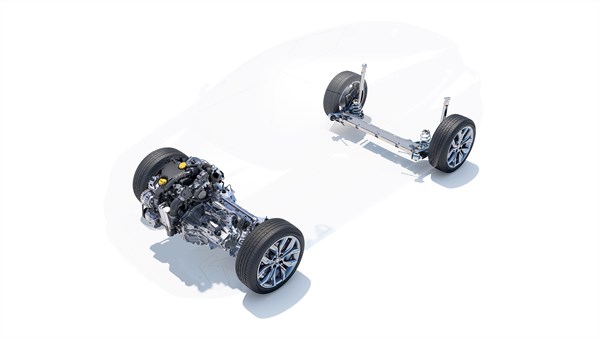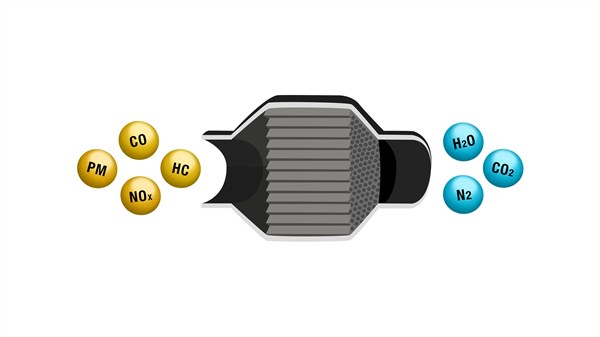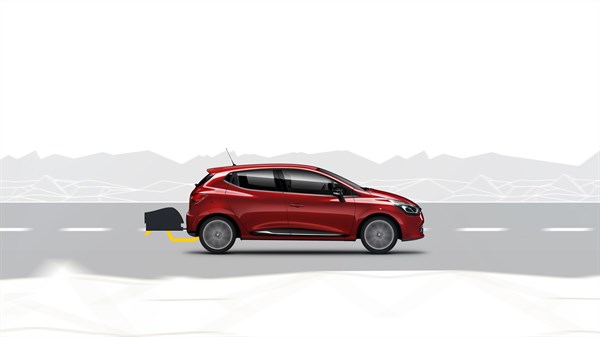RENAULT ENGINES

BLUE DCI DIESEL ENGINES
To reduce pollutant emissions, the new Blue dCi diesel engines are equipped with a Selective Catalytic Reduction (SCR*) system functioning with AdBlue®. This technology continuously converts the nitrogen oxide (NOx) emitted by diesel engines into non-hazardous gases (steam and nitrogen).
Effective in all situations, this technology has no impact on Blue dCi engine performance. Its use allows compliance with new standards that are more stringent and demanding.
Advantages
Composed of 32.5% pure urea and 67.5% demineralised water, AdBlue® is a colourless and non-hazardous aqueous solution. AdBlue® is available in most petrol stations. Your car gradually reminds you when it's time to refill the AdBlue® tank. One full AdBlue® tank covers about 6 to 8 full** fuel tanks.
Worth noting
AdBlue® must be used pure. It has its own tank which can be accessed easily by an outer door shared with the diesel tank, or a separate door. The diesel tank must not be filled with AdBlue®, and vice versa. In the event of an error, do not start the engine, as it could damage the SCR system.
Effective in all situations, this technology has no impact on Blue dCi engine performance. Its use allows compliance with new standards that are more stringent and demanding.
Advantages
Composed of 32.5% pure urea and 67.5% demineralised water, AdBlue® is a colourless and non-hazardous aqueous solution. AdBlue® is available in most petrol stations. Your car gradually reminds you when it's time to refill the AdBlue® tank. One full AdBlue® tank covers about 6 to 8 full** fuel tanks.
Worth noting
AdBlue® must be used pure. It has its own tank which can be accessed easily by an outer door shared with the diesel tank, or a separate door. The diesel tank must not be filled with AdBlue®, and vice versa. In the event of an error, do not start the engine, as it could damage the SCR system.

PETROL ENGINES WITH A PARTICULATE FILTER (in French, FAP)
To reduce particulate emissions, the new direct injection petrol engines now include a particulate filter (FAP) in the exhaust pipe.
This technology removes particles (FAP) from exhaust gases by trapping them in a microporous honeycomb structure and then burning them through an automatic and very regular regeneration process.
Furthermore, a chemical reaction continuously converts the nitrous oxides (NOx), carbon monoxide (CO) and unburned hydrocarbons (HC) into carbon dioxide (CO2) and non-hazardous gases, steam (H2O) and nitrogen (N2).
The range of petrol engines equipped with this technology has been renamed TCe FAP.
Advantages
The particulate filter does not require any maintenance.
It has no impact on your car's driving.
Nor does it have an impact on fuel consumption and CO2 emissions.
This technology removes particles (FAP) from exhaust gases by trapping them in a microporous honeycomb structure and then burning them through an automatic and very regular regeneration process.
Furthermore, a chemical reaction continuously converts the nitrous oxides (NOx), carbon monoxide (CO) and unburned hydrocarbons (HC) into carbon dioxide (CO2) and non-hazardous gases, steam (H2O) and nitrogen (N2).
The range of petrol engines equipped with this technology has been renamed TCe FAP.
Advantages
The particulate filter does not require any maintenance.
It has no impact on your car's driving.
Nor does it have an impact on fuel consumption and CO2 emissions.
(*) Selective Catalytic Reduction involves injecting ammoniac (called NH3) from AdBlue® into the exhaust catalyst. The chemical reaction caused converts nitrous oxides (NOx) into non-polluting gases (steam and nitrogen).
(**) AdBlue ®consumption depends on the car's conditions of use, equipment and driving style. The capacity of the AdBlue® tank depends on the model; it is generally between 15 and 20 litres.
the new WLTP certification test
A regulation more relevant to actual driving behaviour and daily consumption values.
